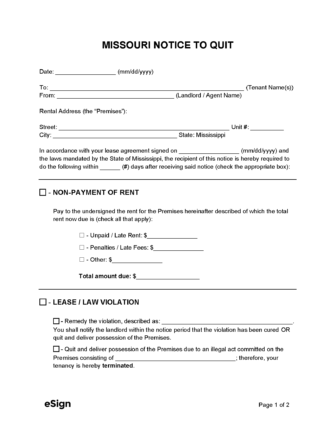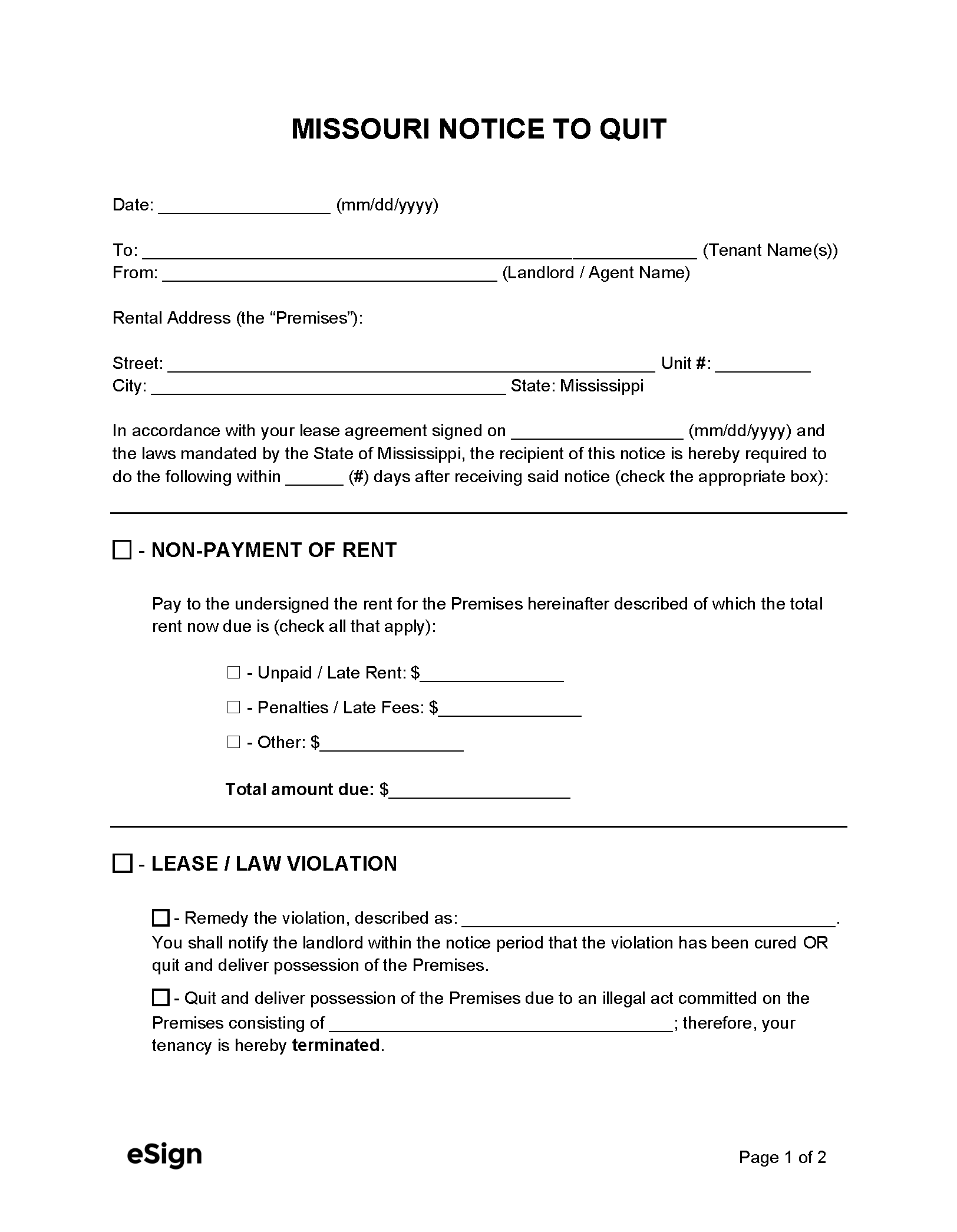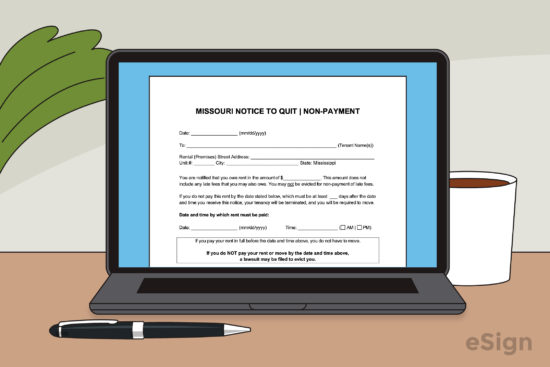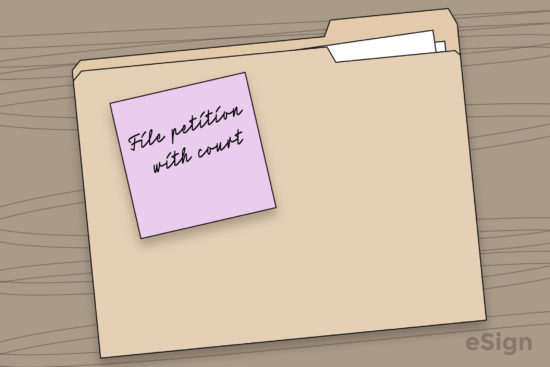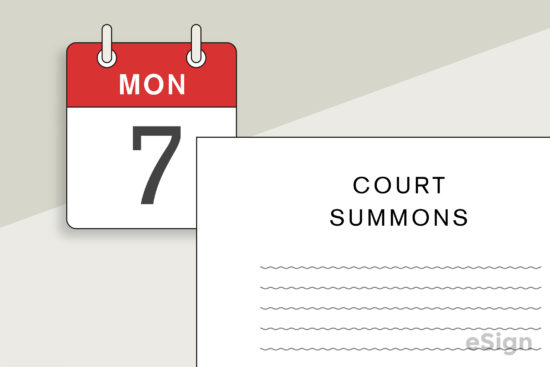Eviction Notices: By Type (5)
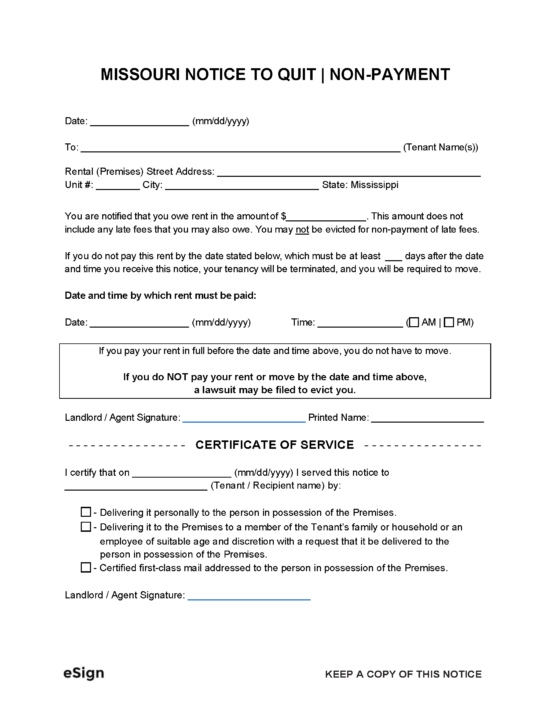 Notice to Quit | Non-Payment – Served on a tenant to demand unpaid rent. Notice to Quit | Non-Payment – Served on a tenant to demand unpaid rent.
Download: PDF, Word (.docx), OpenDocument |
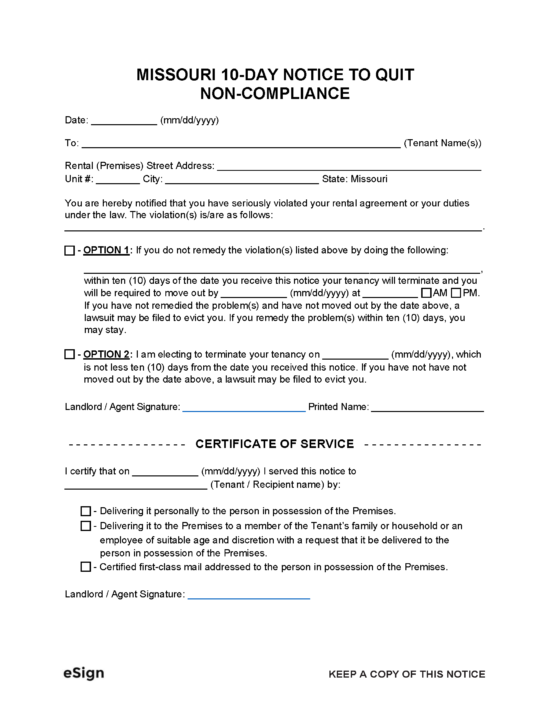 10-Day Notice to Quit | Non-Compliance – Instructs tenants to cure a lease violation or vacate the premises within ten days. 10-Day Notice to Quit | Non-Compliance – Instructs tenants to cure a lease violation or vacate the premises within ten days.
Download: PDF, Word (.docx), OpenDocument |
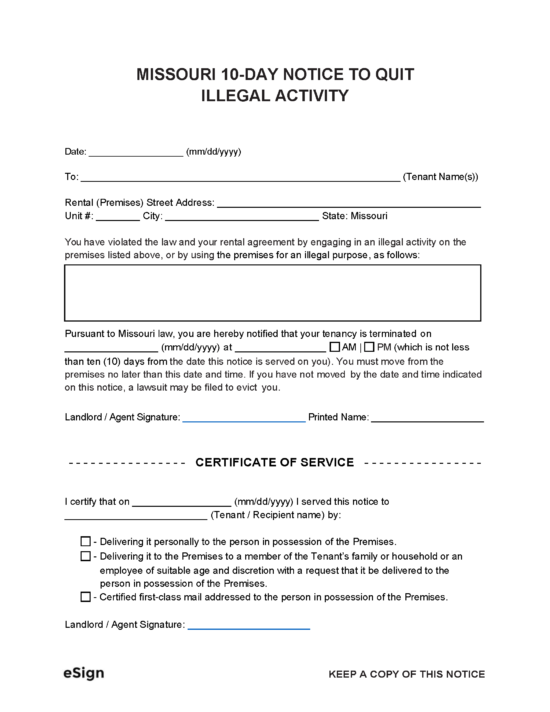 10-Day Notice to Quit | Illegal Activity – Informs a tenant that they have committed or allowed illegal acts on the premises and must vacate in ten days. 10-Day Notice to Quit | Illegal Activity – Informs a tenant that they have committed or allowed illegal acts on the premises and must vacate in ten days.
Download: PDF, Word (.docx), OpenDocument |
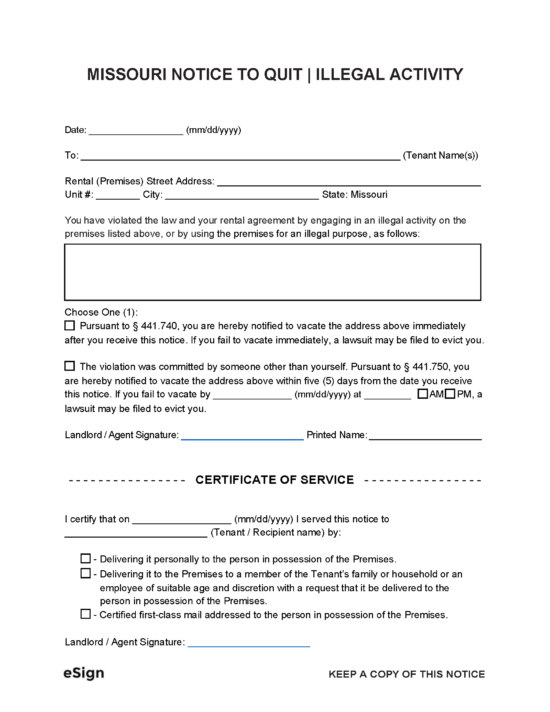 Immediate/5-Day Notice to Quit | Severe Illegal Activity – Notifies a tenant that they have severely violated the law and are required to vacate. Immediate/5-Day Notice to Quit | Severe Illegal Activity – Notifies a tenant that they have severely violated the law and are required to vacate.
Download: PDF, Word (.docx), OpenDocument |
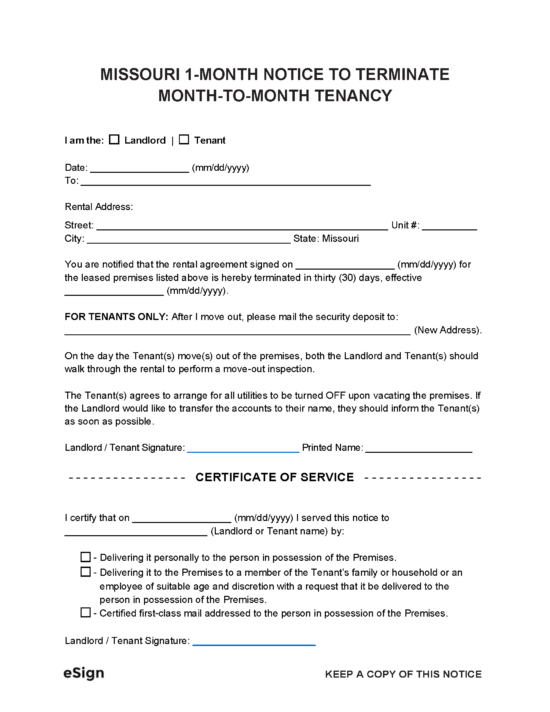 1-Month Notice to Terminate Month-to-Month Lease – Terminates a periodic rental agreement that renews on a month-to-month basis. 1-Month Notice to Terminate Month-to-Month Lease – Terminates a periodic rental agreement that renews on a month-to-month basis.
Download: PDF, Word (.docx), OpenDocument |
Notice Requirements
How to Evict a Tenant in Missouri
Step 1 – Draft an Eviction Notice
The landlord must notify the tenant of their intention to file an eviction lawsuit by serving them with a Notice to Quit.
Step 2 – Serve Notice to Quit
After drafting the Notice to Quit, the landlord should make several copies before serving it on the tenant.
Accepted methods of service are based on the reason for eviction and property location. Landlords should verify the service requirements of their jurisdiction by contacting the clerk of the circuit court.
Step 3 – File Eviction Lawsuit
If the tenant fails to comply with the notice terms, the landlord must file a notarized Petition with the circuit court where the rental unit is located.
The type of Petition filed will vary depending on the case.
- Rent and Possession Action – for non-payment
- Unlawful Detainer – for lease violations and illegal activity
- Emergency Eviction – for severe illegal activity or threat of danger
A Verification of Petition must be filed alongside the landlord’s Petition. The landlord will be charged a filing fee when submitting their paperwork.
Step 4 – Summons
After the Petition is filed, the court will schedule a hearing date and provide the landlord with a Summons. The Summons will relay the lawsuit details to the tenant and provide instructions about how they must respond to defend their case.
Step 5 – Serve Summons
The landlord must arrange to have the Summons and Petition served on the tenant by a court-appointed process server or the sheriff’s department. If served by a process server, the landlord must file a Motion for Order to Serve or Post (SAMPLE).
After receiving the Summons, the tenant will need to file an Answer with the court stating whether they agree with or deny the landlord’s allegations.
Step 6 – Eviction Hearing
The landlord and tenant will need to visit the courthouse on the date and time specified in the Summons. If the tenant fails to appear in court, or if the tenant appears in court but doesn’t dispute the landlord’s allegations, a judgment will be made in favor of the landlord.
If the tenant appears in court and denies the allegations, a trial will be set to resolve the matter.
Step 7 – Trial Date
During the trial, the cases presented by both parties will be examined by a judge and a verdict will be made.
If the tenant wins the lawsuit, they will be permitted to stay. If the landlord is successful, the court will deliver a notice to the tenant demanding that they vacate the premises.
Step 8 – Enforce Eviction Judgment
If the tenant fails to move out after receiving notification to vacate, the landlord must file a Request for Writ of Execution (SAMPLE) to request the sheriff to remove the tenant.
The Writ of Execution can be enforced immediately upon issuance unless the eviction judgment was made as a consequence of a trial. In which case, the Writ may not be enforced until ten full days have passed after entry of the judgment.
Court Forms + Resources
Forms
- Motion for Order to Serve or Post – Sample
- Signing: Landlord and Deputy Court Administrator
- Petition – Sample
- Signing: Landlord and Notary Public
- Request Writ of Execution – Sample
- Signing: Landlord and Court Administrator
- Summons
- Signing: N/A
- Verification of Petition
- Signing: Landlord
- Writ of Execution
- Signing: N/A
Resources
